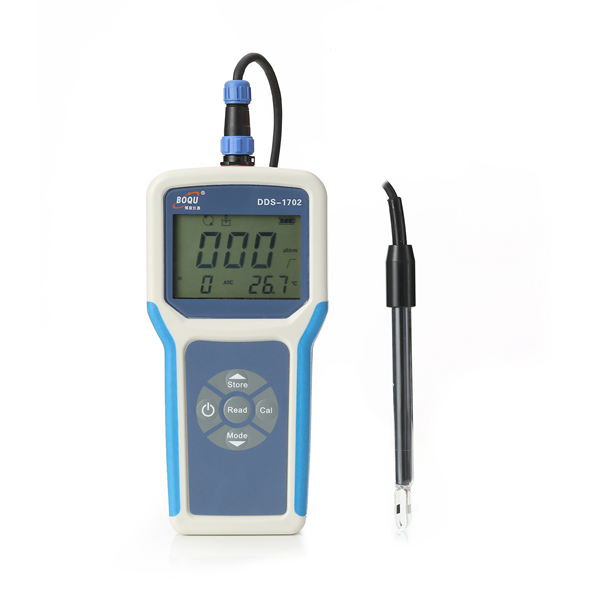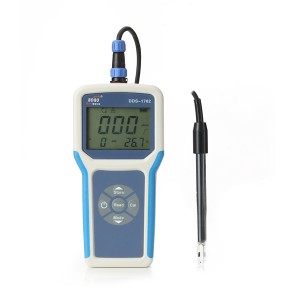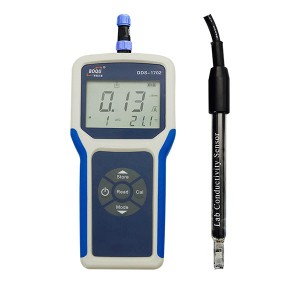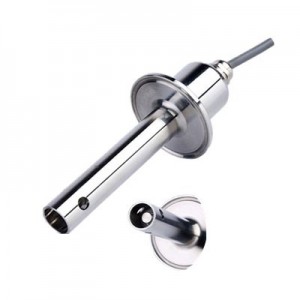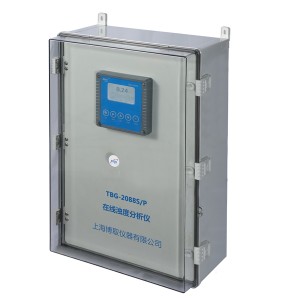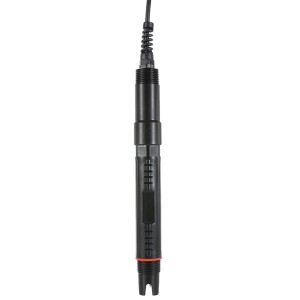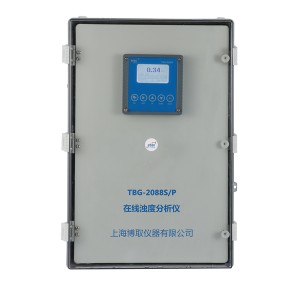DDS-1702 Portable Conductivity Meter is an instrument used for the measurement of the conductivity of aqueous solution in the laboratory. It is widely used in petrochemical industry, bio-medicine, sewage treatment, environmental monitoring, mining and smelting and other industries as well as junior college institutions and research institutes. If equipped with conductivity electrode with the appropriate constant, it can also be used to measure the conductivity of pure water or ultra-pure water in electronic semiconductor or nuclear power industry and power plants.
| Measure Range | Conductivity | 0.00 μS/cm…199.9 mS/cm |
| TDS | 0.1 mg/L … 199.9 g/L | |
| Salinity | 0.0 ppt…80.0 ppt | |
| Resistivity | 0Ω.cm … 100MΩ.cm | |
| Temperature(ATC/MTC) | -5…105 ℃ | |
| Resolution | Conductivity / TDS / salinity / resistivity | Automatic sorting |
| Temperature | 0.1℃ | |
| Electronic unit error | Conductivity | ±0.5 % FS |
| Temperature | ±0.3 ℃ | |
| Calibration | 1 point
9 preset standards (Europe and America, China , Japan) |
|
| Data storage | Calibration data
99 measurement data |
|
| Power | 4xAA/LR6(No. 5 battery) | |
| Monitor | LCD monitor | |
| Shell | ABS | |
Conductivity is a measure of water’s capability to pass electrical flow. This ability is directly related to the concentration of ions in the water
1. These conductive ions come from dissolved salts and inorganic materials such as alkalis, chlorides, sulfides and carbonate compounds
2. Compounds that dissolve into ions are also known as electrolytes 40. The more ions that are present, the higher the conductivity of water. Likewise, the fewer ions that are in the water, the less conductive it is. Distilled or deionized water can act as an insulator due to its very low (if not negligible) conductivity value. Sea water, on the other hand, has a very high conductivity.
Ions conduct electricity due to their positive and negative charges
When electrolytes dissolve in water, they split into positively charged (cation) and negatively charged (anion) particles. As the dissolved substances split in water, the concentrations of each positive and negative charge remain equal. This means that even though the conductivity of water increases with added ions, it remains electrically neutral 2
Conductivity Theory Guide
Conductivity/Resistivity is a widely used analytical parameter for water purity analysis, monitoring of reverse osmosis, cleaning procedures, control of chemical processes, and in industrial wastewater. Reliable results for these varied applications depend on choosing the right conductivity sensor. Our complimentary guide is a comprehensive reference and training tool based on decades of industry leadership in this measurement.

